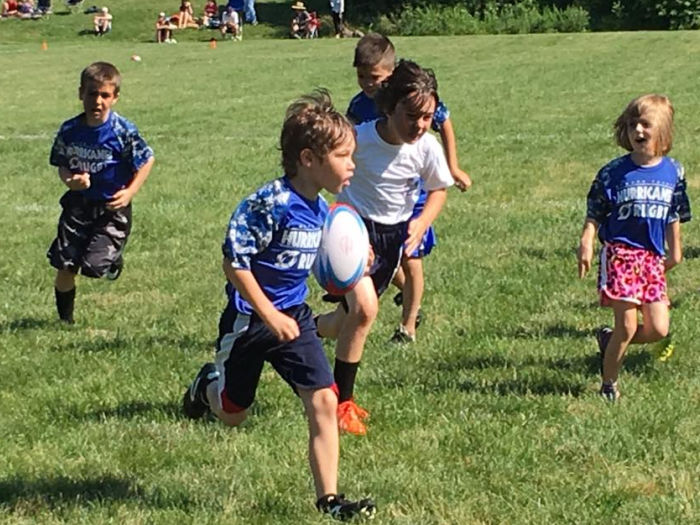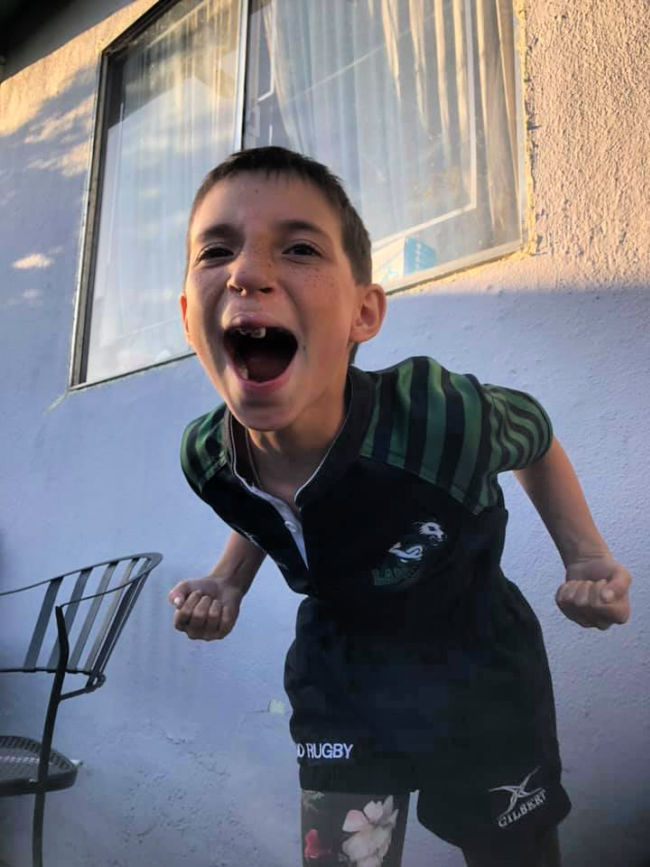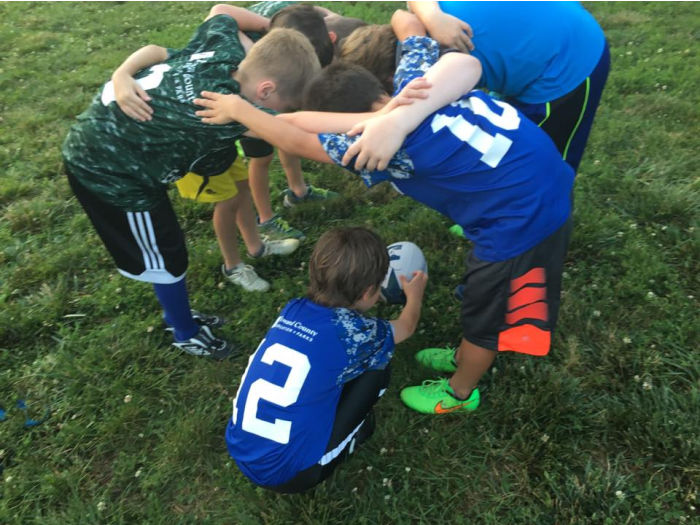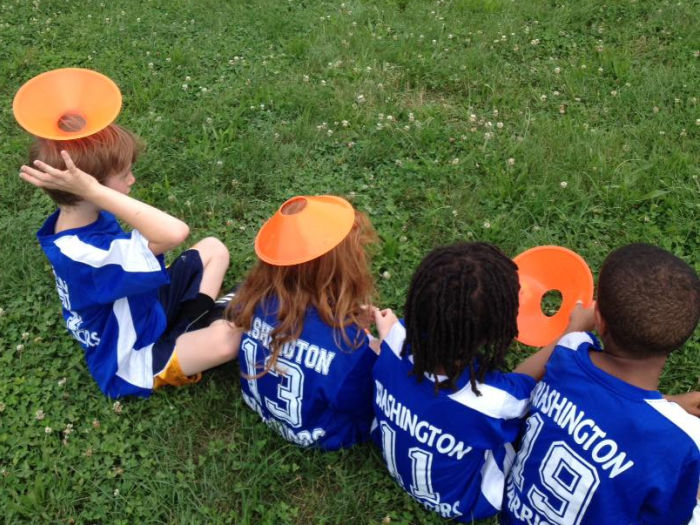Lamorinda is hosting three Open Days in November for kids and families to meet coaches and players and consider joining the upcoming season. Rugby is one of the fastest-growing sports in the country and one of the world’s most popular games. It strikes a great balance between satisfying the needs of rough-and-tumble kids who want more action than they get in soccer and anxious parents wary of the violent collisions found in football. Rugby has positions and roles for players of all sizes and abilities. You don’t need to be the strongest or fastest to excel on the pitch. But the best reason to try rugby is the community.

The rugby community is built on the understanding that competition doesn’t need to be built on animosity and that in the end, we’re all just out for a fun day. That foundation makes rugby an excellent sport for young athletes. The Bay Area has a deep stable of rugby clubs for players starting at age six and continuing all the way up through teams only for players over 35.
Getting your kid started in rugby
So, how do you get started? Let me walk you through how to find a club, some resources for parents and players and maybe even dispel some rugby myths.
Is it safe to play a contact sport without pads?
The million-dollar question! While rugby is known for being played without pads, the game has evolved to allow some forms of soft padding.
Scrum caps provide head protection and padded undershirts cover the shoulders, ribs, and solar plexus. Approved soft shin guards and forearm pads are also available, though uncommon. Mouthguards are the only required padding and must fit entirely within the mouth (no external parts). Rugby’s rules (called laws) further mitigate the need for football-style pads. At all levels, the emphasis is on technique and safety during contact.
The stature of junior youth players means they are already fairly close to the ground and don’t build up a lot of momentum, which limits force on impact. Basically, when no one is wearing pads, everyone is more cautious of their own safety and the laws of the game are crafted to promote competition, not collision.
When is rugby season?
In Northern California, youth rugby typically starts in late November and runs through late March with a break during mid-December. The season is designed to contain as little overlap as possible with other fall and spring sports. Practices are once or twice each week depending on age. Games are played on Saturdays or Sundays. This year rugby in the area got off to a late start due to Covid restrictions. The current season will end in mid-June. There is usually an optional more laid-back series of games in the summer for kids who want to keep playing.
Rookie rugby starts as young as age 6
What’s the progression of play for young athletes?
Youth rugby follows a progression of increasing contact as kids’ bodies and minds mature. Rookie Rugby is a non-contact (flag or touch) version of the game used to introduce new players to the sport. In Northern California, Rookie Rugby is usually associated with U8 programs, though it is sometimes used in elementary and middle schools as well. Kids are eligible to start U8s when they turn six years old. U8 practices are focused on learning the basics of running and passing. The focus is on fun. There are games played against other teams, but no one keeps score, and coaches are allowed to roam the field to help keep players moving in the right direction.
There are some U8 programs in the Bay Area:
Broncos (Concord)
Danville Oaks
Lamorinda Rugby Club
Marin Highlanders
Pen Youth Razorhawks (East Palo Alto)
Pleasanton Cavaliers
San Francisco Golden Gate
San Mateo Wolverines
Silicon Valley RFC
United Rugby (San Jose)

States and local organizations differ around the country as to when rugby players begin tackling. Here in NorCal, kids start tackling in U10s, which means they start at eight years old. While kids start to tackle and ruck at this age, other aspects of contact are scaled back. They do not push in the scrums and they do not contest in the lineouts. U10s is played with 10 players per side. After U10, players graduate to U12. At this stage, teams consist of twelve players per side. There is still no pushing in the scrums at U12, but they do start to contest at the lineout.
Because kids grow at different rates, U10 and U12 players are divided into teams of Lights and Opens, based on weight. From U8-U12, teams are co-ed, and scores are not kept. The primary focus at this age is on fun and learning the rugby ethos of respect for teammates, opponents, and referees. The same list of clubs above also offer U10 and U12 programs.
Middle School & High School Rugby Programs
After U12, the game starts to increasingly resemble what you might see on TV, though with rules and restrictions to make the game safer for young athletes. Middle school is also when teams begin to be divided by gender (though the world and national governing bodies continue to evolve their views on the placement of transgender athletes).
Once players reach high school age, they can join a school-based team or continue to play on a club team. In high school, competitions are split between school teams and club teams, then further divided by school size. Here’s a full list of Bay Area U19 programs.

Rugby Equipment & Where to Find It
Rugby uniforms are simple, consisting of shorts, socks, a jersey, a mouthguard, and cleats. Some teams will provide a jersey on game days that they will collect and wash after the match.
- Jerseys. For Junior Youth (U8-MS), players typically provide their own jerseys. These can be purchased online through the team, or you might ask parents of older kids if they have one that doesn’t fit their player anymore.
- Shorts. There are rugby-specific shorts, but you don’t need to have them to participate. Almost any pair of athletic shorts will do, though you should keep in mind that it’s a contact sport so you want a nice snug waistband.
- Socks. Rugby socks resemble soccer or baseball socks but are also not required.
- Cleats. You can wear almost any kind of molded rubber cleats so if your kid already plays a field sport, you’re probably good to go. The restrictions on cleats do prohibit metal blades like those on baseball spikes or a centered toe cleat for screw-in studs.
- Mouthguard. The most important piece of equipment is the mouth protector. Not only do mouthguards protect the teeth, but they also help defend against concussions. For rugby, mouthguards must fit entirely inside the mouth with no external parts (no lip guards, no straps. Also, Steph Curry be damned, please encourage your player to keep it in their mouth the entire time!).
Optional items that can boost the confidence of players and parents include a scrum cap for the head and a padded undershirt. No leg pads or padded underwear are allowed. If your player wears eye protection, they must also wear a scrum cap.
I wish I could point you towards a list of great local rugby shops, but we just don’t have many. You can get just about everything you need at most local sporting goods stores, but if you want rugby-specific shorts or cleats, there’s Rugby City in Union City. Or you can try The Soccer Post, which has locations in Lafayette and Alameda, but you may want to call ahead to make sure they have what you need. In the end, your best bet may be to go online. The most popular site is World Rugby Shop. They sell general items as well as team-specific uniforms and fan apparel for many of the local clubs. If you prefer a smaller retailer, you can try Rugby Athletic or Steamroller Rugby.
How Do I Sign Up for Rugby?
The first stop on your journey should be the Rugby NorCal home page. They have a ton of great info including the evolving list of local clubs and club contacts. Pick the age group you want, find the clubs nearest you, and get in touch. Note that some of the contact info may be out of date, so try a Google search to find the club’s web page as well (or try the links in the list above).
Pro Tip: Most clubs have info days for players and/or parents. Find out when that is and go meet the coaches and other parents. We had a few clubs nearby us, so we visited their info sessions and picked the one that best fit our budget, schedule, and personality.
Where can I watch rugby?
If you’d like to see live rugby, the Bay Area is home to several great college programs. Cal and St. Mary’s top the list. You can also spend a beautiful day at Stanford’s Steuber Rugby Stadium or on campus at Santa Clara (when the pandemic is over).
Rugby is available to watch just about anywhere other than the major networks. ESPN carries international professional leagues, the Collegiate Rugby Championship, and the USA’s Major League Rugby. Find international competitions on various platforms: Sling has the Six Nations, NBC Sports Network carries the HSBC World Series of 7s. You can also find full games on YouTube. Don’t be afraid, I promise the youth game isn’t what you’ll see from the pros and internationals.

Did you know?
Rugby made a triumphant return to the Olympics in 2016 and the United States has become a contender on the world sevens circuit.
The Bay Area has a rich history of one of the county’s rugby hot spots. The USA team that won the first rugby gold medal in Olympic history in 1920 was made up entirely of players from Northern California. Cal’s rugby team is the most successful college program in US history. St. Mary’s is another perennial national powerhouse. Rugby NorCal is the largest youth rugby organization in the country.
Time to give rugby a try
See, that’s a great pun if you know that a score in rugby is called a try. If you didn’t know that, then you probably think I’m about as funny as my kids do. See you on the pitch!
Roberto Santiago is a Berkeley native and local rugby jack-of-all-trades. Roberto was a player and coach for the Berkeley Rhinos U19 club. His kids play for Lamorinda, where he is also a coach. Roberto has also refereed most levels of rugby and now works to help develop youth referees.
Share this:
- Click to share on Facebook (Opens in new window) Facebook
- Click to share on X (Opens in new window) X
- Click to share on Pinterest (Opens in new window) Pinterest
- More
- Click to email a link to a friend (Opens in new window) Email
- Click to share on Tumblr (Opens in new window) Tumblr
- Click to print (Opens in new window) Print
- Click to share on Reddit (Opens in new window) Reddit
- Click to share on Pocket (Opens in new window) Pocket
- Click to share on LinkedIn (Opens in new window) LinkedIn





